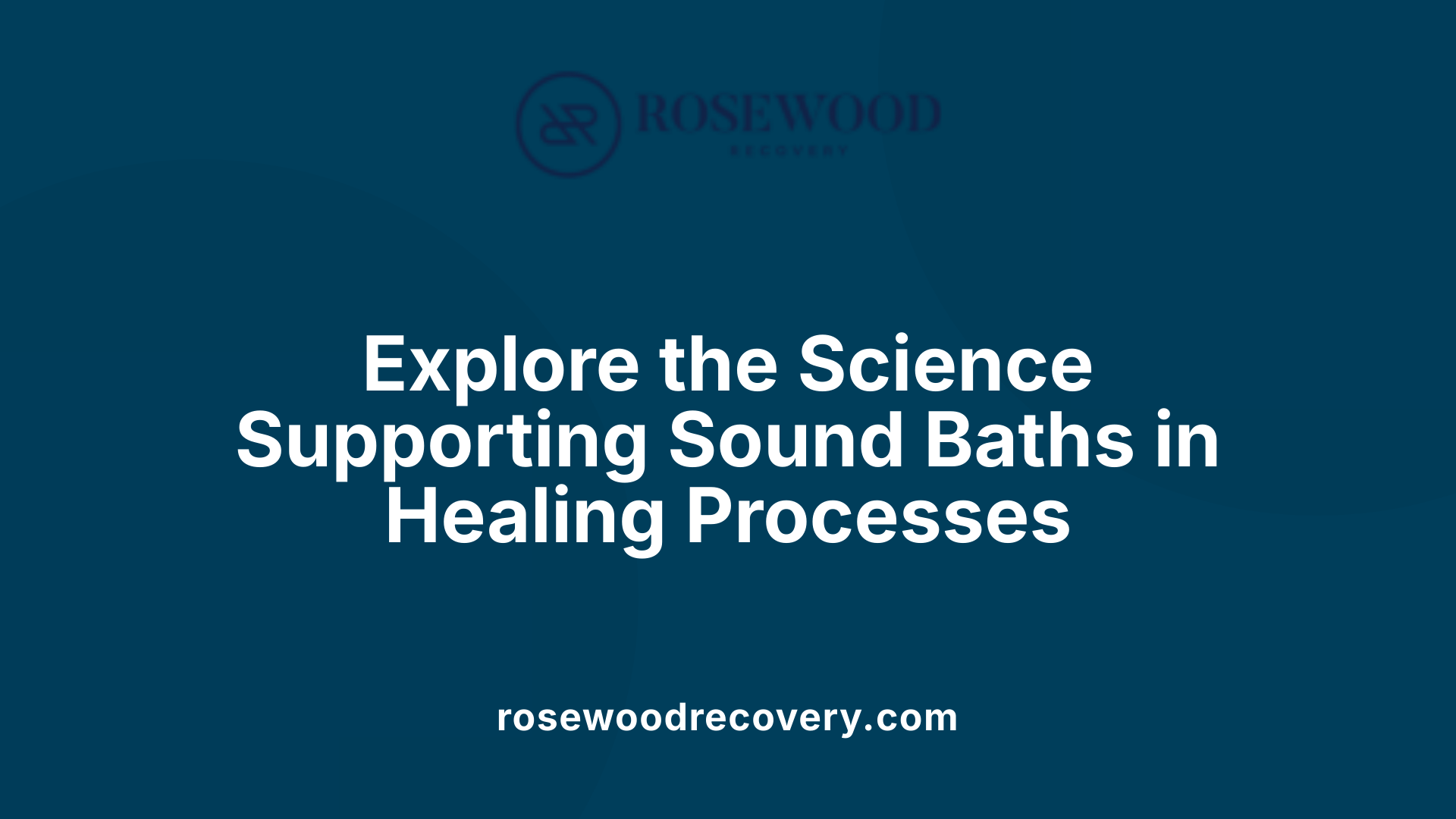The Holistic Approach to Recovery with Sound Therapy
In recent years, sound baths have emerged as a promising complementary modality in recovery and healing. These immersive experiences utilize sound vibrations from instruments such as singing bowls, gongs, and tuning forks, fostering relaxation, emotional release, and physical renewal. Rooted in ancient traditions and supported by emerging scientific research, sound therapy offers a holistic approach that addresses the physical, mental, and spiritual dimensions of recovery. This article explores how sound baths support deep healing, their mechanisms, application methods, and the scientific evidence underpinning their efficacy.
The Fundamental Principles and Benefits of Sound Healing in Recovery

Why is sound healing considered powerful for recovery and healing?
Sound healing is viewed as a potent complementary therapy because it harnesses the use of specific sound frequencies and vibrations to promote comprehensive healing. These sound waves influence the body’s stress response and support self-healing processes.
One of the core mechanisms is the ability of sound therapy to slow brain waves. Instruments like singing bowls, gongs, and drums can facilitate brainwave entrainment, shifting individuals from high-energy beta waves to more relaxed alpha or theta states. These states are associated with deep relaxation, meditation, and emotional balance.
This shift not only reduces stress and anxiety but also creates a mental environment conducive to emotional release and physical repair. Furthermore, vibrations from sound therapy impact cellular structures and energy centers within the body, such as chakras, fostering both physical and emotional restoration.
Modern research supports these effects, showing that sound vibrations can influence neural activity, decrease physiological stress markers like blood pressure and heart rate, and improve overall well-being. Its holistic approach addresses all dimensions of health—physical, emotional, and spiritual—making it an invaluable tool in addiction recovery.
In practice, sound healing helps manage cravings, stabilize mood swings, improve sleep, and facilitate trauma processing. This ancient yet scientifically validated therapy nurtures resilience, supports emotional regulation, and awakens the body’s innate healing capacities, playing a vital role in sustaining recovery and long-term health.
Mechanisms and Science Behind Sound Baths Supporting Healing

How does sound healing facilitate physical and mental healing?
Sound healing works by harnessing vibrational sounds from instruments like singing bowls, gongs, drums, and tuning forks. These vibrations resonate with the body’s cells, promoting relaxation and encouraging cellular oscillations that support tissue repair and improved circulation. This process can stimulate cellular functions, aiding in detoxification, metabolism, and regeneration.
Beyond physical effects, sound therapy influences mental states by altering brainwave activity. The vibrations can induce shifts from high-frequency beta waves associated with active thinking to slower alpha and theta waves linked to relaxation, meditation, and subconscious processing.
Scientific studies support that sound-induced brainwave changes can reduce anxiety, stress, and traumatic memories, making it effective for conditions like PTSD. Culture and history show a widespread use of sound for spiritual and holistic healing, blending history, science, and art.
Overall, sound healing nurtures well-being by harmonizing physical, emotional, and spiritual health through consciously applied vibrational energy.
Integration of Sound Healing into Mental Health Recovery Strategies
Are there specific approaches to incorporating sound healing into mental health recovery?
There are several effective ways to integrate sound healing techniques into mental health recovery plans. One popular method is the use of sound baths, which involve instruments like singing bowls, gongs, and tuning forks. These sessions create vibrations that promote deep relaxation, help process emotional tension, and support emotional release.
Music therapy is another approach, encouraging active participation through playing instruments or analyzing music. This engages individuals in self-expression and social connection, both of which are vital for emotional stability. Guided sound meditation combines mindfulness with soothing soundscapes, helping individuals achieve a meditative state that reduces stress and enhances mental clarity.
Vibroacoustic therapy and brainwave entrainment are specialized techniques that utilize specific sound frequencies to influence brain activity. These methods can shift brainwaves from high-stress beta states to more relaxed alpha or theta states, promoting calmness and emotional regulation.
These sound healing approaches are often used alongside traditional treatments like counseling and medication. Such combination therapy aims to address physical, emotional, and spiritual aspects of mental health, fostering resilience and emotional stability.
Tailoring interventions to individual needs is essential for maximizing benefits. Whether it’s through a group sound bath, personalized music therapy, or brainwave entrainment, sound healing provides a versatile, non-invasive tool to support mental healing and recovery.
Application and Methods of Sound Baths in Recovery Settings

In what ways are sound baths integrated into recovery and healing practices?
Sound baths are increasingly recognized as valuable tools in addiction recovery and holistic healing. They are used as a complementary therapy, combining soothing instruments such as singing bowls, gongs, chimes, and tuning forks to produce immersive sound environments. These sounds generate vibrations that promote relaxation, emotional release, and mental clarity.
During a sound bath session, the vibrations influence brainwave activity, helping shift the mind from high-stress beta waves to more calming alpha and theta states. This transition supports emotional stability, reduces anxiety, and fosters a meditative mindset.
Physiologically, the vibrations can lower blood pressure, ease muscle tension, and relieve pain, providing physical benefits essential to recovery. Emotionally, participants often experience a deep sense of calm, release of pent-up feelings, and enhanced self-awareness.
In practice, sound baths are commonly woven into traditional therapeutic approaches like counseling, meditation, and mindfulness-based therapies. They serve as an effective relaxation aid that reduces stress, facilitates emotional processing, and enhances overall well-being.
Beyond immediate relaxation, sound baths contribute to long-term recovery by helping individuals develop healthy coping strategies. Regular sessions can improve sleep quality, diminish cravings, and boost resilience, making it easier to manage triggers and maintain sobriety. Guided experiences also teach self-regulation and mindfulness skills, empowering individuals to handle life's challenges more effectively.
Embracing the Therapeutic Potential of Sound for Lasting Recovery
The integration of sound baths into recovery and healing modalities represents a revolutionary step toward holistic health. By harnessing the power of sound vibrations, individuals can experience profound relaxation, emotional release, and physical restoration. Scientific research continues to validate traditional wisdom, highlighting the influence of sound on brainwave activity, cellular health, and energy pathways. As part of comprehensive treatment plans, sound baths serve not only as a therapeutic tool for reducing stress, anxiety, and trauma but also as a means to foster resilience and promote overall well-being. Embracing these ancient yet cutting-edge techniques offers a future where recovery is nurtured through harmony, balance, and inner harmony.
References
- 10 Sound Healing Benefits That Can Enhance Your Recovery
- How Can Sound Bath Therapy Aid With Addiction Recovery?
- Sound Healing: How It Works, Types, Benefits, Applications, and ...
- The Science Behind Sound Bath Therapy
- The Healing Power of Sound Therapy in Recovery
- Harmonious Healing with Sound Baths
- Sound Therapy | Therapies for Addiction Treatment - Linwood House
- Understanding the Sound Bath Phenomenon - Saint & Angels




